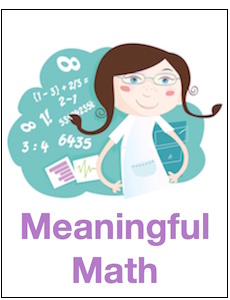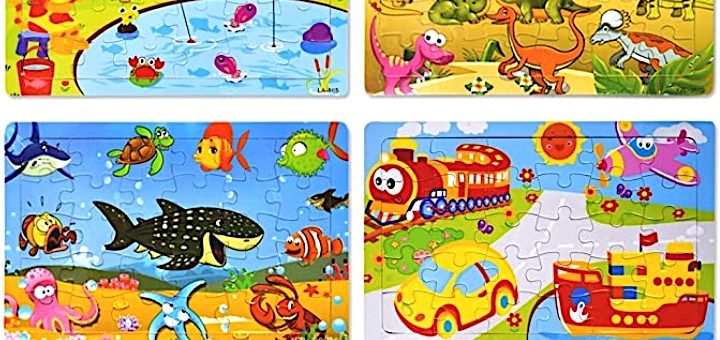Two Fun Stats Activities for Middle School Math
A MiddleWeb Blog
 I teach AP Statistics and I love it! But before I started teaching AP Statistics, back when I was teaching Algebra I, I always dreaded the end of the year when we reached the stats part of our course of study. I just didn’t do it enough to feel comfortable with it.
I teach AP Statistics and I love it! But before I started teaching AP Statistics, back when I was teaching Algebra I, I always dreaded the end of the year when we reached the stats part of our course of study. I just didn’t do it enough to feel comfortable with it.
So I thought it might be helpful if I shared some activities I’ve discovered that I think go along well with the stats standards for the middle grades (6th and 8th specifically).
The activities I am sharing are ones I have personally used, and that my students seemed to like. I’ve also included the student handouts that go with each activity.
Scatter Plots and Bivariate Data: Candy Grab
8.SP.A: Construct and interpret scatter plots for bivariate measurement data to investigate patterns of association between two quantities, describing patterns in terms of positive, negative, or no association, linear and non-linear association, clustering, and outliers.
MA19.8.19: Given a scatter plot that suggests a linear association, informally draw a line to fit the data, and assess the model fit by judging the closeness of the data points to the line.
For this standard I like the candy grab activity. This lesson has students constructing a scatterplot with their data and describing the patterns they see. I tried it for the first time this year, and my students liked it.
The gist is this: students are presented with a large jar of Starbursts. The question is asked, “Do you think that a person with larger hands will be able to grab more Starbursts?”
- Allow students time to discuss the question. The conversation can help students start to understand the concept of positive and negative association.
- Students will then measure their hands. Students need to be carefully instructed as to how to measure their hands. Consistency is key.
- Once hands are accurately measured, students are allowed to grab from the Starburst jar. There also needs to be consistency when reaching in for candy. I had my students hold their hand straight out, lower their hand into the jar, and then grab the candy. The main thing is all students do it the same way.
The candy grab is a lot of fun because some students with smaller hands will grab a lot of candy and some with larger hands will surprise themselves by grabbing less.
After all the measurements have been recorded, students will make a scatterplot with the data (handspan on the x axis and number of candies on the y axis). This is an opportunity to remind students of dependent and independent variables.
Once the graph is made, there can be a discussion about what pattern the students see: positive, negative, or no pattern at all. From there students can look for a linear pattern and also have a discussion about outliers.
If time permits, here’s a simple, fun activity online (from the 20th century!) that helps students get an intuitive idea about correlation. My stats students love this activity!
Find Mean, Median, Mode & More: Cup Stacking
6.SP.5. c. Giving quantitative measures of center (median and/or mean) and variability (interquartile range and/or mean absolute deviation), as well as describing any overall pattern and any striking deviations from the overall pattern with reference to the context in which the data were gathered.
MA19.6.24 Represent numerical data graphically, using dot plots, line plots, histograms, stem and leaf plots, and box plots.
Student handout – Cup Stacking
My students are more engaged when they collect their own data. For this standard I like the “Cup Stacking Challenge.”
- Students will stack 6 cups as quickly as they can (they get one trial run). Their partner times them as they stack, and then they switch up. There are many, many videos showing cup stacking competitions (who knew?) and I show some of those videos at the beginning of the activity, including this one (!):
Solo cups or Ball aluminum cups will work, but you may find they slide around too much. The “Regulation Stacking Cups” work a lot better. They are not too expensive on Amazon; they cost about $10 for 12 cups. If you want to get really fancy you can buy the sets that have the regulation mat and timer with it!
- After the classroom data has been collected, students can calculate the mean, median, and standard deviation. They can also look at the shape of the distribution and tell what they notice. Are there any clusters of data? Are there any outliers?
- Since this activity generally has outliers, it can be a good time to talk about how outliers affect the mean. Students can calculate the mean with and without the outliers, and they should start to notice what effect outliers have on the mean.
- In a follow up lesson the students can take this data and create a box plot or stem and leaf graph with the data from the activity.
More Stats Activities
In my Algebra 2 class, we start our unit on statistics tomorrow. This year I am very excited! If anyone wants an idea for an activity for a standard I didn’t mention, please just leave me a comment and I will be glad to share any activity for that standard that I have. And please leave your own stats ideas in the comments, too!
ALSO SEE:
Michelle’s wildly popular 2021 blog post:
3 Fun Activities for Teaching Statistics
for some additional middle school ideas.































